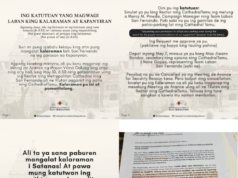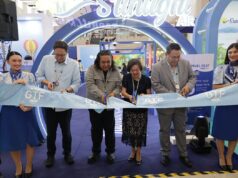“The rate for dumping there is not affordable to local government units and it could be more economical to purchase it,” Pineda told the media here as she pointed out the dangers to health posed by the already illegal dumpsites still in operation in some parts of this province.
The landfill belongs to the Metro Clark Waste Management Corp. (MCWMC) and was estimated to cost P400-million when completely finished. It started operations in 2002 under a build-operate-transfer scheme over 25 years.
Pineda met with Angeles City Mayor Edgardo Pamintuan and Pampanga 1st district Rep. Carmelo Lazatin to discuss the government’s renegotiating with the MCWMC for the purchase of the landfill facility.
The MWCMW charges about P4,000 per ton which local governments could not afford, Pineda said.
She said she recently talked to the management of MCWMC to ask for a 50 percent discount for Pampanga, as she noted that while the landfill is largely in Capas, Tarlac, parts of it are within Pampanga. So far, she has not received any response from the management.
“It’s just unacceptable that the landfill takes in wastes from other areas like Baguio City, but can not accommodate garbage from the areas hosting it without special consideration,” she said.
Pineda said that it could be more economical to purchase the MCMWC facility as she cited the urgency of coping with the waste problem not only in Pampanga and in other provinces.
For his part, Pamintuan, who assumed post only after the last elections, said that he is considering moving Angeles City’s garbage to other landfills as the city government could not afford the rates of MCWMC.
He noted that the MCWMC had limited its intake of city garbage after the former city administration still owed it some P63-million for landfill services.
The construction of the sanitary landfill, reputed to be the only one of its kind in the country, was started in 1999 by the German consortium Ingenieurburo Birkhan Nolte and Geers & Brockstedt.
It was reputed to even exceed official government environmental standards according to German technology.
To prevent leaching from waste materials, the landfill is lined underneath with .75-meter thick clay liner and 2.5-millimeter plastic liner. It also has a drainage system for leachate towards a treatment plant where there is an “aeration pond” to purify anew the wastes from the drainage pipes.
Built in phases, the first phase with about 3 hectares area for a landfill facility was implemented in 2002 whereas the second phase consisting of a “landfill gas capture system” covering another 1.5 hectares landfill pit area was slated for completion in 2007.
The German consortium later formed the MCWM which is 40 percent owned by the Germans and 60 percent by various Filipino investors. The landfill can accommodate 1,000 to 3,000 tons daily.
The 100-hectare area allotted for the project is within the domain of the sub-zone of the state-owned Clark Development Corp. (CDC). The plan was to use 70 hectares for landfill facility, 10 hectares for recycling facility, five hectares for infrastructure, and 15 hectares for environmental buffer zone.



